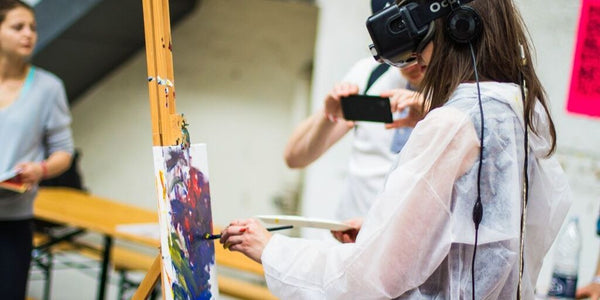
Integrating STEAM into STEM
In times past, it has been acceptable for instructors to be qualified in one area. However, with growing emphasis being placed on learnedness across the curriculum, it is becoming of increasing importance for those same instructors to have a wide variety of subject-specific knowledge. For example, CCSS emphasizes having technical skills, but not in a self-contained fashion; such skills must be applied across disciplines, including in areas like English and the arts. In order for teachers to help students meet these demands, they must be qualified to teach subject matters that extend beyond their traditional teaching skill set.
More valuable than simply integrating technical understanding for academic performance, is the intangible gift students get from discovering the connections between STEM and STEAM (otherwise known as Science, Technology, Engineering, Art, and Math). One student recalls having majored in economics while in college and marveled at her classmates’ fascination with how to design bar stools. In her early childhood, she was taught the idea that art was simply to be confined to an “activity” and thus was not a legitimate form of study. However, after spending time with other students who were designing furniture, she was able to rediscover a kind of art (pun not intended) that was both relevant to what she was studying and actually what had originally galvanized her interest as a young child (Feldman, 2015)
One writer puts it this way:
Ultimately, STEAM is people-centric, not subject-centric; it puts student personality and individuality at the forefront. With STEAM, the pressure is off to become a scientist or engineer—you can be a designer, digital artist, coder, art director, and scientist and engineer all at the same time. STEAM says we can be better engineers by learning how to think artistically, and we can re-engage artists with science by letting them see how STEM can work in the arts. It’s infinitely more exciting, especially in an increasingly interdisciplinary and digital world. In STEAM, creativity is the central tenet. It not only revives and modernizes STEM, it actually addresses, through real-world projects, why the STEM subjects should matter to everyone. And that’s how we should all be learning (Feldman,2015).
Recently, PCS has updated their digital photography lab to help kids get more involved with the objective of meeting ISTE standards while satisfying their urge to be creative. To limit the STEM conversation merely to technical or mathematically-driven subjects has the tendency to leave students with less than a holistic experience wherein they fail to receive a comprehensive education that meets their needs across all disciplines. PCS recognizes this need and emphasizes the importance of English and art literacy while integrating it into a robust STEM education!








